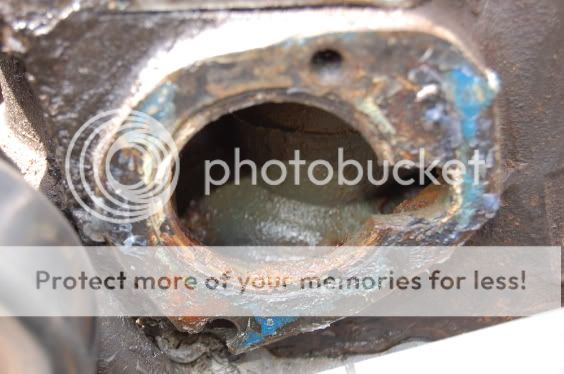A Heli-Coil is a screw thread insert used to repair threaded holes. It is made from wire that has a "flattened diamond" shape, and requires a special drill (usually listed, if not included) and tap (which is usually included.)
A "threaded bung" is a solid insert with internal and external threads. The better ones have standard threads on the outside, negating the need for special taps and drills. For instance, a 1/4"-20 threaded bung will usually have a 3/8"-18 external thread, meaning you drill the hole to size to accept a 3/8"-16 tap, tap the hole, and screw the bung in. It will have an inside thread roughly equal to the one that was there orignally, unless you select something different.
Both are available from MSC Direct (
www.mscdirect.com.) Even if you don't get anything from them this go-round, order their catalogue. It's freem, four inches thick, and certainly worth having (reminds me, mine is four years old. Time to correct that oversight...)
If you're going to weld, let me offer up some advice.
DO NOT tackle this job yourself, unless you have welded cast before. Cast is not easy to weld (I've assisted, but I've never done it) and requires pre-heating, and sometimes post-heating and slow cooling to get a good weld and not get cracks. The casting usually has to be heated to somewhere around 500*F so it doesn't warp or crack - at least in the area of the weld. A much more gradual heat gradient is required for castings than for wrought stock.
DO try to get it TIG-welded. Even with pre- and post-heating, TIG remains about the best process for the job.
DO try to get a high-nickel rod, to match the alloy you're welding. Changing the contents ("assay") of casting metal can result in significant changes in how it responds to temperature elevations and changes - and that can result in weld failure. Don't ask how I know...
DO try to get someone who has welded castings to do the job for you - and you help (if you don't have practise welding cast iron.) Especially for something like this - it's well worth it.
DO see if you can't get a machine shop to grind the weld smooth for you in this case, or take a good deal of effort and time to grind it nice and smooth yourself. This is something you just don't want to screw with.
Oh - and since it's a 1990 (and therefore a #2586 head,) I won't worry about that - I have several of those. I'm trying to nail down a couple #7120, #0630, and #0331 heads now - I've even got a #2585 (although I'd like to get another.)
5-90

 we are going to try to pull it and weld it. just cause that doesn't cost anything and if that doesnt work then junkyard time here we go!
we are going to try to pull it and weld it. just cause that doesn't cost anything and if that doesnt work then junkyard time here we go!

